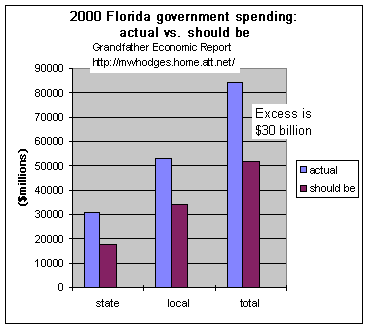FLORIDA STATE + LOCAL GOVERNMENT DIRECT SPENDING TRENDS CONSUMING 7% TOO MUCH OF THE ECONOMY - $31 BILLION (61%) TOO MUCH |
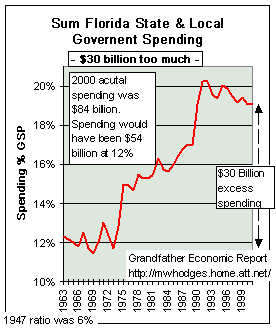 The chart at left plots 1963-2000 trends of total Florida state
& local government spending, as a share of the state's economy (gross state product). The chart at left plots 1963-2000 trends of total Florida state
& local government spending, as a share of the state's economy (gross state product). Spending has risen much faster than the economy - from 12% of gross state product (GSP) in 1974 to 19%. Had 2000 spending remained close to 12% of GSP, then 200 spending would have been $31.4 Billion less. The excess is $31.4 billion. This means a 61% excess compared to prior spending ratios. This increase in government, consuming an additional 7% share of the economy, came from an effective reduction in the private sector's share of the state's economy. A 37% total spending cut would be required to re-acquire ratios close to 12% of GSP of the mid 1960s - - which in turn is double the estimated 6% ratio of the late 1940s. For the period 1947-63 it is estimated an additional 6% of the economy was transferred to government, assuming Florida's 1947 ratio was similar to national averages at that time. Had 2000 spending been at the 6% GSP ratio, said spending would have been a whopping $57 Billion LESS (it would have been about $27 billion in total for state & local, not the $84 billion realized). The above chart shows the totals of Florida state direct spending and local government spending in relation to the size of the economy. The following two (2) charts break down these trends in state vs. local government direct spending. |
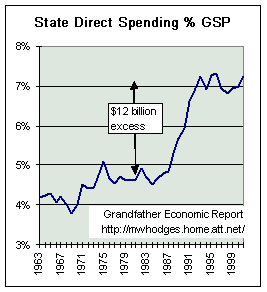 Left chart shows direct spending at the Florida state government level, as a
share of Florida's economy, 1963-2000. (excludes double counting of transfers to local
govt.)
Left chart shows direct spending at the Florida state government level, as a
share of Florida's economy, 1963-2000. (excludes double counting of transfers to local
govt.)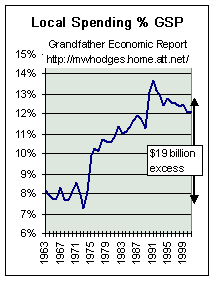 Left chart shows spending at the Florida local government level, as a
share of Florida's economy, 1963-2000.
Left chart shows spending at the Florida local government level, as a
share of Florida's economy, 1963-2000.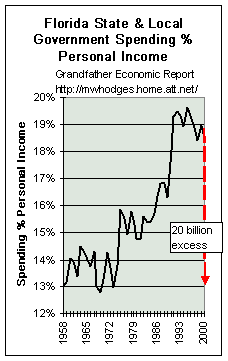 This
chart compares the sum of state & local government spending as a percentage of state
personal income, instead of to GSP as above 1958 to 2000.
This
chart compares the sum of state & local government spending as a percentage of state
personal income, instead of to GSP as above 1958 to 2000.